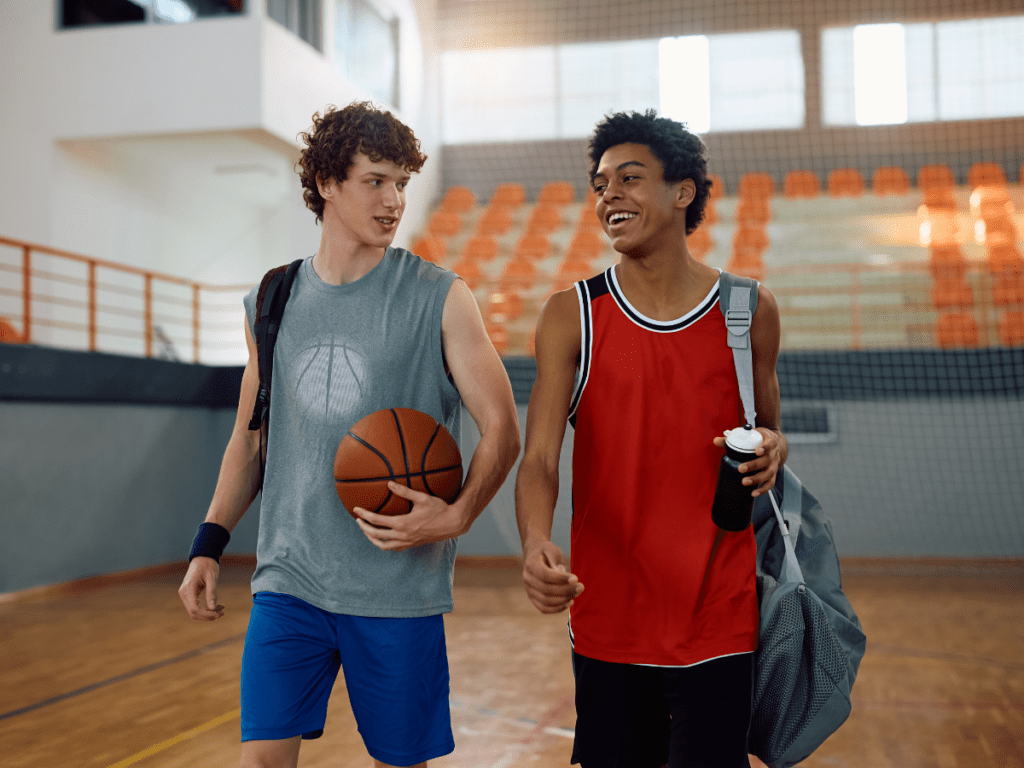
From the sports field to the boardroom, groups are everywhere! Think back to a time when you were joining a new group. Did you feel uncertain or nervous? Did you know what was expected of you in your new role? These feelings are quite common and completely normal for athletes as they transition into new teams. However, as coaches and mentors we can take certain steps to make incoming athletes feel more confident and comfortable, setting the stage for their time on the team.
In this blog we discuss the importance of athlete onboarding and provide effective strategies for bringing athletes into your team environment.
Defining onboarding
Athlete onboarding, also called socialization or integration, is the process whereby new athletes learn and adjust to the expectations of a group (Benson et coll., 2015; Saks et coll., 2007). One aspect of this process involves the incoming athlete developing an understanding of the group’s goals, what part they play in achieving these objectives, and developing the skills needed to fulfill their role (Benson et coll., 2015; Saks et coll., 2007).
Another important part of the onboarding process is learning the group’s norms and values (Benson et coll., 2015; Saks et coll., 2007). As coaches, we can use techniques throughout the onboarding process to help new athletes adjust to the specific responsibilities and expectations of the team (Bauer et coll., 2007).
Why onboarding is important
Groups, including sports teams, each have their own unique context made up of (Martin et coll., 2014):
- the physical space
- the experience each member brings to the group
- the group’s goals
- existing relationships between group members
Incoming athletes must therefore navigate these existing contexts and figure out how they fit into the team.
New athletes face potential uncertainty related to both their responsibilities on the team and how to develop relationships with coaches and other team members (Benson et coll., 2015). The purpose of onboarding is to reduce these uncertainties (Bauer et coll., 2007). When teams use effective onboarding strategies, athletes better understand their roles, experience fewer competing demands from different roles and experience greater confidence in their ability to fulfill their role responsibilities, as well as greater social acceptance within their team (Bauer et coll., 2007; Saks et coll., 2007).
These outcomes subsequently lead to better performance, greater role satisfaction, commitment, increased intentions to remain on the team, and less athlete turnover (Bauer et coll., 2007; Saks et coll., 2007). Since using effective onboarding strategies has many positive outcomes, including improved performance, coaches and mentors can benefit their team by incorporating onboarding techniques when integrating new team members.
Strategies to effectively onboard on your team
The following are some different kinds of strategies to engage in onboarding activities:
Collective strategies
Collective tactics mean providing all the incoming athletes with the same set of experiences (Saks et coll., 2007). One athlete that Benson and colleagues interviewed mentioned: “I really bonded with the other rookies… because we were all there for the same reason,” demonstrating that shared experiences are important for successful onboarding (Benson et coll., 2016, p. 468). You could, for example, have all incoming athletes watch a presentation together on the team’s norms and values.
Formal strategies
Formal strategies are defined as fostering a structured environment where expectations are clearly outlined and role ambiguities are reduced during a specific onboarding period (Benson et coll., 2016; Saks et coll., 2007). For example, as a coach, you could organize formal meetings with incoming athletes to clearly outline expectations and ensure both you and the athlete are on the same page about the athlete’s role on the team (Benson et coll., 2016). Benson et coll. (2016) specified that roles are dynamic in sport as they depend on athlete progress or regress. Therefore, having a degree of role flexibility, in addition to meeting multiple times over the course of a season, is beneficial.
Sequential strategies
Sequential strategies are a defined series of steps that each incoming athlete goes through as they prepare to take on their role in the group (Saks et coll., 2007). For example, incoming athletes can start by meeting each other, then meeting the rest of the team, and so on. This gives a clear picture of what the incoming athlete should expect throughout the onboarding process, which minimizes uncertainty (Saks et coll., 2007). As a coach, you could provide the athlete with a visual overview of what steps will be taken throughout the onboarding period through a handout or schedule.
Serial strategies

Serial strategies involve incoming athletes being mentored by veteran members who act as role-models and help the incoming athletes adjust to the new team (Saks et coll., 2007). Athletes really appreciate support from veteran team members and find that having a veteran member to rely on made the transition to a new team easier (Benson et coll., 2016). For example, as a coach, you could assign each new athlete to a veteran team member to help show the new athlete the ropes. On your team, you could have position-specific buddies and incorporate partner training drills specific to the position so that the veteran can help the incoming athlete feel more confident.
Investiture strategies
Investiture strategies are fulfilled when the incoming athlete’s unique personality and experiences are valued within the team (Saks et coll., 2007). One of the biggest concerns athletes have prior to joining a new team is whether their new teammates will accept them (Benson et coll., 2016). As a coach, it is therefore important to foster an inclusive environment where team members are valued and accepted for who they are, while still outlining that there are certain expectations, such as punctuality, that must be met (Benson et coll., 2016). As a coach, you could organize a team meeting where the objective is to recognize the strengths and skills that each team member brings that also complement and support agreed upon team standards. This allows for team members to be valued for who they are, but also provides clarity regarding team expectations.
Concluding thoughts
Joining a new sports team can cause feelings of nervousness and anxiety, but as coaches and mentors, we can engage in purposeful activities to make incoming athletes feel accepted and confident as they transition into their new role on the team. These steps may look different from team to team, but the overall goal should be to reduce feelings of apprehension and uncertainty for our incoming athletes by utilizing institutionalized onboarding tactics more broadly. As coaches, we want our athletes to succeed, and that success begins with effective onboarding strategies.